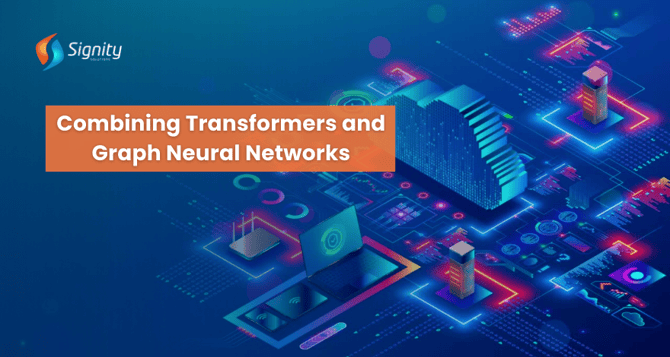Hybrid Models: Combining Transformers and Graph Neural Networks
Combining Transformers and Graph Neural Networks" explores merging Transformers and Graph Neural Networks (GNNs). This fusion offers powerful tools for processing structured and unstructured data, unlocking new potentials in various domains like natural language processing and recommendation systems.

In recent years, hybrid models that combine Graph Neural Networks (GNNs) and Transformers for structured data processing have become more and more popular. These models combine the best features of GNNs—which are excellent at processing graph-structured data—and Transformers—which are excellent at capturing sequential and contextual information. I'll give a thorough explanation of these hybrid models in this explanation, covering everything from the introduction to the end.
Introduction
Data that is clearly organized and usually displayed in tabular or graph form is referred to as structured data. Structured data, commonly organized in tables or graphs, is crucial for AI development. For example, graphs can be used to represent social networks, recommendation systems, and knowledge graphs, where nodes and edges stand for entities and relationships, respectively. Transformers, on the other hand, have processed text and images, among other types of unstructured data, with remarkable success. By combining these two methods, one can handle structured data with greater power.
1. Understanding Transformers
Neural network architectures known as transformers were first created for applications involving natural language processing. They are made up of a network of attention mechanisms that are able to recognize relationships and long-range dependencies between different parts of a sequence. The following are the main parts of transformers:
Self-Attention Mechanism
This feature enables each component in the sequence to concentrate on other components while gathering background knowledge.
Multi-Head Attention
Transformers capture various kinds of relationships by using multiple attention heads.
Positional Encoding
Transformers employ positional encodings to account for element order and manage the sequential nature of data.
2. Understanding Graph Neural Networks
GNNs are becoming more and more common in applications such as recommendation systems and social network analysis because they are made to work with graph-structured data. Important elements of GNNs consist of:
Graph Convolutional Layers
These layers allow the model to learn representations for every node based on its neighborhood by propagating information between nodes in a graph.
Aggregation Functions
To obtain data from nearby nodes, various aggregation functions (such as mean, max, or attention-based) can be applied.
3. Blending GNNs and Transformers
Transformer and GNN hybrid models take advantage of each architecture's advantages. The following steps are usually involved in the process:
Node Embedding
To generate initial node embeddings for context-aware representations, the graph data may first undergo transformation via an initial transformer layer.
GNN Layer(s)
To update node embeddings and gather data from nearby nodes, one or more GNN layers are applied.
Transformer Layer(s)
To capture contextual data or broad relationships in the graph, transformer layers may be added after the GNN layers.
Output Layer
The final node embeddings can be used to perform different downstream tasks, such as node classification, link prediction, or recommendation.
Advantages
Effective Management of Graph Data
Transformers excel at managing contextual information, whereas GNNs are effective at capturing graph-specific data.
Better Performance
Compared to using either architecture alone, combining the two can produce better results on structured data tasks.
Flexibility
Different kinds of structured data and tasks can be accommodated by hybrid models.
Conclusion
For managing structured data, hybrid models that blend Transformers and GNNs offer a potent solution. Hybrid Models merge Transformers and Graph Neural Networks, capturing contextual relationships and graph-specific info.
Transform Ideas into Reality with Our AI Solutions!
From concept to deployment, we bring your vision to life through advanced AI development. Reach out to our experts to discuss your project!
This enhances performance in social network analysis, knowledge graph reasoning, and recommendation systems. As this field of study develops, we can anticipate more breakthroughs and uses for these hybrid models.


%201-1.webp)


.png?width=344&height=101&name=Mask%20group%20(5).png)








.png?width=352&name=microsofts-recall-feature%20(10).png)







